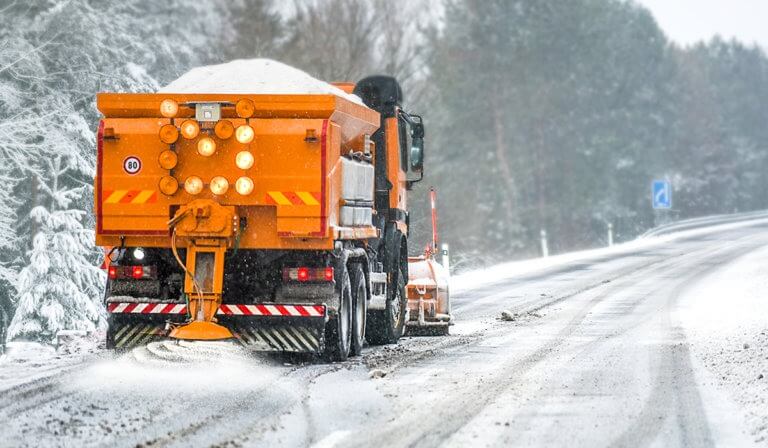
Is Use of Road Salt Nearing Its End? (And, Is There a Connection to PFAS?)
Road salt (sodium chloride) has been used for decades in most states with wintery roads and highways as a low-cost deicer. How many times have you been stuck behind the salt truck? Ever wonder where all that road salt goes? Well, it goes right into the groundwater and our drinking water supplies!
New York State is the largest user of road salt in North America and the impact of salt to groundwater is getting a lot of attention. The Paul Smith’s College Adirondack Water Institute (PSC AWI) located in Paul Smiths, New York, is conducting research to understand the impacts of road salt to soil fertility and water quality so that municipalities can improve management practices to reduce the impacts of road salt applications.
The PSC AWI is monitoring a network of 15 streams in the Adirondack Park that represent a broad range of salt application rates. The study data will be used to help develop relationships between salt application and water-quality impacts and response. The results are being published and presented in meetings, and although the focus is on the Adirondack region, the results are expected to be widely applicable to other settings.
There is increasing concern over impacts to groundwater with salt. Monitoring of private wells alongside roads has shown increasing sodium chloride concentrations to unacceptable levels. The current US EPA guidance level for sodium in drinking water is 20 mg/L. The journal Adirondack Explorer has been reporting on road salt use in New York State and the unfortunate contamination of groundwater.
An Adirondack Explorer investigation found that across upstate New York, road salt has seeped into drinking water supplies, poisoned wells, endangered public health and threatened people with financial ruin. In an average year, according to the Clear Roads maintenance research consortium, New York spreads roughly 50,000 pounds per mile on every lane of state highway, making it one of the heaviest users in America. But state officials have largely escaped accountability for the resulting pollution.
The fact that the groundwater salt contamination is due to routine application of road salt largely provides a defense to the state for any responsibility. This is prompting legislative action and a bill to study the impacts the state highway officials have on water supplies was proposed last winter in Saranac Lake by Sen. Betty Little, Assemblyman Billy Jones and Assemblyman Dan Stec. The bill has stalled, and environmental groups are urging Gov. Andrew Cuomo to make it law.
So, not all of our groundwater contamination issues are restricted to the groovy emerging contaminants . In this case, simple sodium chloride – table salt – used in high volumes as road salt is doing the damage. We need to properly weigh the benefits of safe roads during winter months and the management of road salt.
Speaking of emerging contaminants , last November there were reports of per- and polyfluoroalkyl substances (PFAS) being detected in salt stockpiles in the Netherlands. We have been seeking further information unsuccessfully on these initial reports, but will keep you apprised on additional information as we find it.

